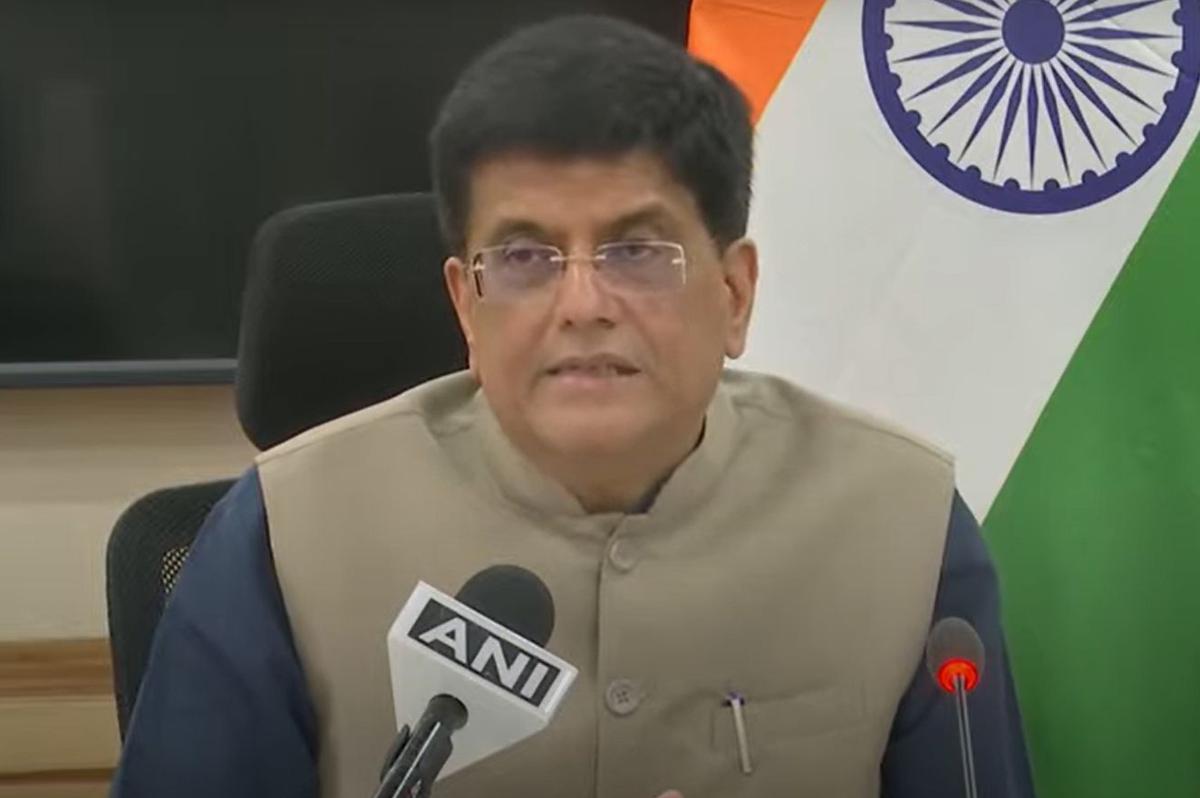The Commerce and Industry Ministry reported on Sunday that India’s goods exports increased by 43.2 percent to about $418 billion dollars in 2021-22, an increase of over $125 billion over the COVID-affected year 2020-21, with March registering the largest-ever outbound shipments totaling $40.38 billion.
The previous year’s record exports represented a 33.33 percent increase over the pre-pandemic levels of 2019-20. Piyush Goyal, the Minister of Commerce and Industry, said total exports were around 5% higher than the $400 billion objectives for the year, which had been met by March 21.
The government did not reveal data on imports, which are generally released along with the official monthly export figures. By February 2022, total merchandise imports had surpassed $550 billion, resulting in a $175.75 billion trade imbalance in the first eleven months of the year. Imports of goods totaled $393.6 billion in 2020-21.
Engineering goods and agriculture products exports, both of which reached all-time highs in 2021-22, accounted for the majority of merchandise export growth. Engineering goods exports increased by 46% year over year to $111 billion, with $16 billion worth of items delivered to the United States alone. With a sharp increase in rice, wheat, marine products, coffee, and dairy products, agricultural exports are estimated to have surpassed $50 billion.
Export increased
“Even a pandemic like COVID-19 and a war-like environment haven’t hindered us from meeting our year’s export goal.” “These outcomes show what can be accomplished when a leader like Prime Minister Narendra Modi takes a ‘whole of government’ and ‘whole of nation’ approach,” Mr. Goyal remarked.
Small and medium firms, as well as labor-intensive sectors including jute goods, textiles, leather, gems, and jewelry, have experienced growth, according to the Minister. Mr. Goyal stated that the government will continue to work hard to boost MSMEs’ and the farm sector’s exports as well as job creation.
He also praised farmers for increasing production, resulting in an increase in wheat exports from 2 lakh tonnes in 2019-20 to 21.55 lakh tonnes last year and more than 70 lakh tonnes in 2021-22. According to Commerce Secretary BVR Subrahmanyam, about half of this wheat was shipped to Bangladesh primarily through the Petrapole land border.
“We will continue to export wheat in large quantities to nations affected by the situation in Ukraine and Russia (important global wheat suppliers),” Mr. Goyal said, adding that he expects to export 100 lakh tonnes of wheat this year. Even while increased commodity prices may have contributed to some of the growth in exports, the performance has been commendable, according to Aditi Nayar, chief economist at ICRA, who had forecast full-year exports of $415 billion.
‘Push for Value-Added Markets and New Markets’
Mr. Subrahmanyam stated that India is no longer merely a primary goods exporter and that commodities or raw materials that have traditionally experienced large exports have actually suffered a fall in 2021-22, citing dwindling iron ore and oilmeal shipments as examples.
“These are the sectors where the government is purposefully saying we should manufacture here and export manufactured goods,” he added, adding that finished goods and processed items were given more priority. “Our textile exports total $35 billion, with raw cotton accounting for roughly $3 billion. The remainder is being processed. We have $6 billion in mobile phone exports,” says the company.
“With the exception of raw cotton, other agricultural exports, and iron ore, we are mostly a processed products exporter,” Mr. Goyal explained. “This is why it is critical for us to establish free trade agreements with the developed world so that value-added exports may increase and create jobs.”
Officials stressed that the increase in shipments stemmed from a variety of industries, including electronics, where India is a major importer and expects to export $15.58 billion in 2021-22, up from $11 billion the previous year.
Other high-growth areas included petroleum products, which are mostly sold to the UAE, pharmaceuticals, and pharmaceutical items, which have the Netherlands as their largest consumer. Bangladesh was India’s largest importer of chemicals, while China was India’s largest buyer of gems and jewelry.
They also noted that the reach of Indian products has widened as industrialized countries have begun to import increasingly higher-value commodities. “Earlier, neighboring and ASEAN countries dominated Indian exports, but this year we saw a significant increase in exports to developed countries like the United States, the Netherlands, Hong Kong, Singapore, the United Kingdom, Belgium, and Germany,” said Santosh Sarangi, Director-General of Foreign Trade.
‘Challenges for 2022-23’
“You should be aware that there is a conflict scenario causing shipping lines to be disrupted, container shortages to exist, and shipping costs to rise. With all of these hurdles, the fact that we crossed $40 billion in exports in March gives us optimism,” the minister said, adding that the Free Trade Agreements with Australia and the United Arab Emirates will assist grow exports this year.
Mr. Goyal stated that export promotion councils will work out sectoral potential and Indian ambassadors abroad will examine chances in various importing countries, which will then be converted into an ‘ambitious aim.’

